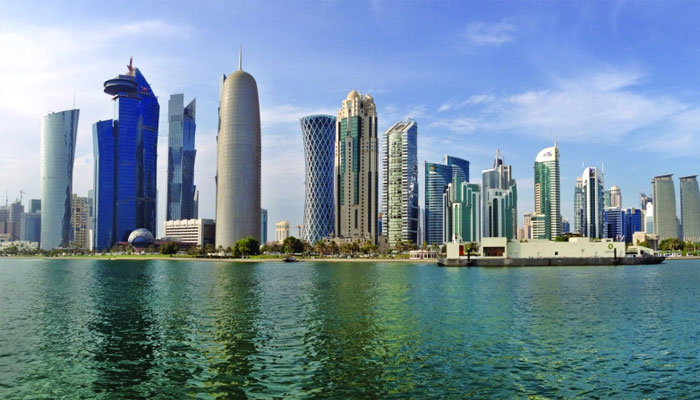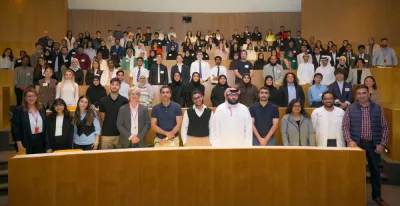Doha
Standard & Poor’s (S&P) has affirmed its 'AA/A-1+' ratings on Qatar with a ‘stable’ outlook.
The stable outlook, S&P said, reflects its view that “Qatar's high economic wealth and strong external and fiscal positions will balance its institutional shortcomings and limited monetary flexibility over the next two years.”
S&P projects Qatar’s real economic growth to average about 4% annually in 2015-2018, sustained by the government’s $220bn investment programme.
Qatar is a wealthy economy; S&P estimates its GDP per capita at $78,000 in 2015.
The hydrocarbons sector creates about 55% of Qatar's GDP, 90% of government revenues (oil and gas taxes and royalties, plus dividends from Qatar Petroleum), and 85% of exports.
But S&P views Qatar's economy as “undiversified”.
In 2013-2014, the oil and gas sector expanded by about 2%, and the non-oil sector by 12%, resulting in average annual GDP growth of about 6%. S&P projects slower real GDP growth of about 4% during 2015-2018 because the hydrocarbon sector will likely continue to stagnate.
The non-oil sector, on the other hand, should remain buoyant, thanks to public investment and supported by the growing population.
In S&P view, Qatar's “high wealth means that its relatively weak per capita economic growth performance is not an immediate concern for the ratings.”
However, beyond S&P’s two-year outlook horizon, Qatar's “economic risk position could deteriorate relative to economies that are expanding more rapidly.”
In its view, medium- to long-term challenges to Qatar's “competitive position” in the liquefied natural gas (LNG) market are likely to come from new shale production, Russia's gas pipeline to China, and increased pressure to delink LNG contracts from the oil price.
Nevertheless, S&P sees several factors that support Qatar's “competitive position” in the LNG market. First, it expects global demand for natural gas to remain strong, absorbing the new supply.
Second, Qatar's strategy has been to diversify into all major markets, adjusting the mix of destinations and contract types according to market needs.
Moreover, the majority of its exports are under long-term contracts, which provide certainty of volume off-take, while built-in diversion clauses in the contracts provide additional flexibility to manage quantity and price risks.
Third, Qatar will continue to have a cost-advantage over many new projects in other countries.
Since Qatar produces and exports significant quantities of condensate and natural gas liquids associated with natural gas, its effective average cost of producing LNG is much lower.
“We also assume that Qatar's oil production will decline as output from maturing fields’ contracts. We expect an average annual decline in crude oil production of about 5% over 2015-2018. We project largely flat gas output (LNG and natural gas), given Qatar's moratorium on new investments in the sector, while condensate volumes will likely increase by about 5% per year over the same period,” S&P said.
Based on S&P oil and gas market assumptions, it expects the general government balance to fall into a modest deficit in 2015 and 2016.
Notwithstanding the government's intention to rationalise and outsource part of its operations and to award more projects to the private sector, it remains to be seen whether the desired level of participation by the private sector can be achieved, the ratings agency observed.
“We understand that the government is committed to awarding about $220bn worth of large-scale investment projects over the next 10 years. The programme will focus on infrastructure, education and health, and the majority of these projects are expected to be completed ahead of the International Federation of Football Associations' World Cup championship in 2022,” S&P said.
In the context of lower hydrocarbon revenues and increasing capital spending, the government is prioritising existing projects, focusing funding on the highest priority and strategic investments.
“We expect national development strategy projects to improve the economy's productive capacity and strengthen Qatar's competitive position. Alongside government investments funded through the budget, public-enterprise and private-sector spending on the national development strategy is likely to be funded by borrowing from domestic financial institutions. This may cause banks' net external liability position to widen and their loan-to-deposit ratios to rise.
“That said, in 2014, increased public-sector deposits on banks' balance sheets reduced banks' reliance on external funding, and the loan-to-deposit ratio has stabilised at about 109%.
“We assume Qatar's net external asset position will remain strong at about 200% of current account receipts in 2015-2018. Qatar has accumulated considerable foreign assets over the past decade, as a result of its development of its natural resources.”
S&P forecasts that the general government net asset position will stay robust, averaging about 100% of GDP during the next three years. The pace of asset accumulation will depend on how hydrocarbon production and prices develop.
It also expects Qatar's assets to provide many decades of production at the current levels.

S&P projects Qatar’s real economic growth to average about 4% annually in 2015-2018, sustained by the government’s $220bn investment programme


